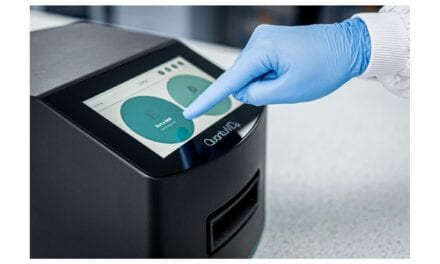Molecular sensor releases thyme flavor when encountering influenza virus, potentially enabling at-home screening through gum or lozenges.
Researchers have developed a molecular sensor that could enable flu detection through taste, releasing a thyme flavor when it encounters the influenza virus in saliva. The technology, reported in ACS Central Science, aims to address current limitations in flu diagnostics by providing a low-tech screening method that could be incorporated into chewing gum or lozenges.
The sensor addresses key challenges in current flu testing. While nasal swab-based PCR tests are accurate, researchers say they are slow and expensive. At-home lateral flow tests are convenient and generally low-cost but don’t detect pre-symptomatic infections, when people are contagious before developing symptoms.
If incorporated into chewing gums or lozenges, “this sensor could be a rapid and accessible first-line screening tool to help protect people in high-risk environments,” says Dr Lorenz Meinel, the study’s lead researcher and professor and head of chair for pharmaceutical technology and biopharmaceutics at the Julius Maximilian University of Würzburg, in a release.
Neuraminidase-Based Detection Method
The research team developed the sensor based on a substrate of the influenza virus glycoprotein called neuraminidase, the “N” in H1N1. Influenza viruses use neuraminidase to break certain bonds on host cells during infection.
The researchers synthesized a neuraminidase substrate and attached a thymol molecule to it. Thymol, found in the spice thyme, registers as a strong herbal taste. When the sensor is in the mouth of someone infected with flu, the viruses cleave off the thymol molecules, and the flavor is detected by the tongue.
Laboratory testing showed the sensor released free thymol within 30 minutes when exposed to human saliva from people diagnosed with flu. When tested on human and mouse cells, the sensor didn’t change cellular functioning.
Clinical Trials Planned
Meinel and the research team plan to begin human clinical trials in about two years to confirm the sensor’s thymol taste sensations in people with pre- and post-symptomatic influenza.
The researchers acknowledge funding from the Federal Ministry of Research and Education (now called the Federal Ministry of Research, Technology and Space) and have registered a patent with the European Patent Office on this technology.
The approach represents a shift away from complex detectors and machinery toward using the human tongue as a detector that is “available for anyone, everywhere and anytime,” according to the published study.
If successful in clinical trials, the technology could increase at-home flu screenings and potentially help prevent pre-symptomatic transmission of the disease by enabling earlier detection before symptoms develop.
ID 3119187 © Darko Plohl | Dreamstime.com





